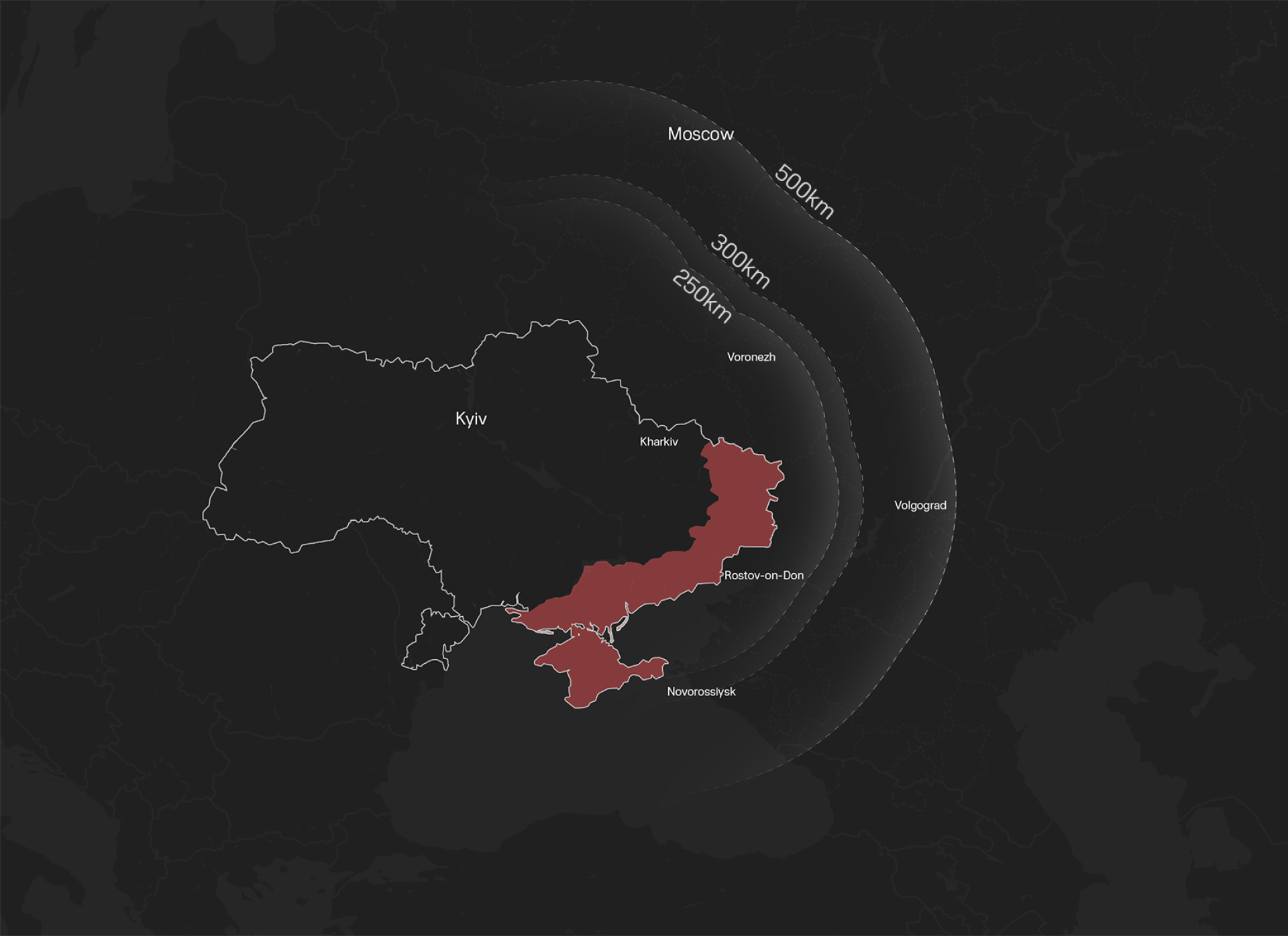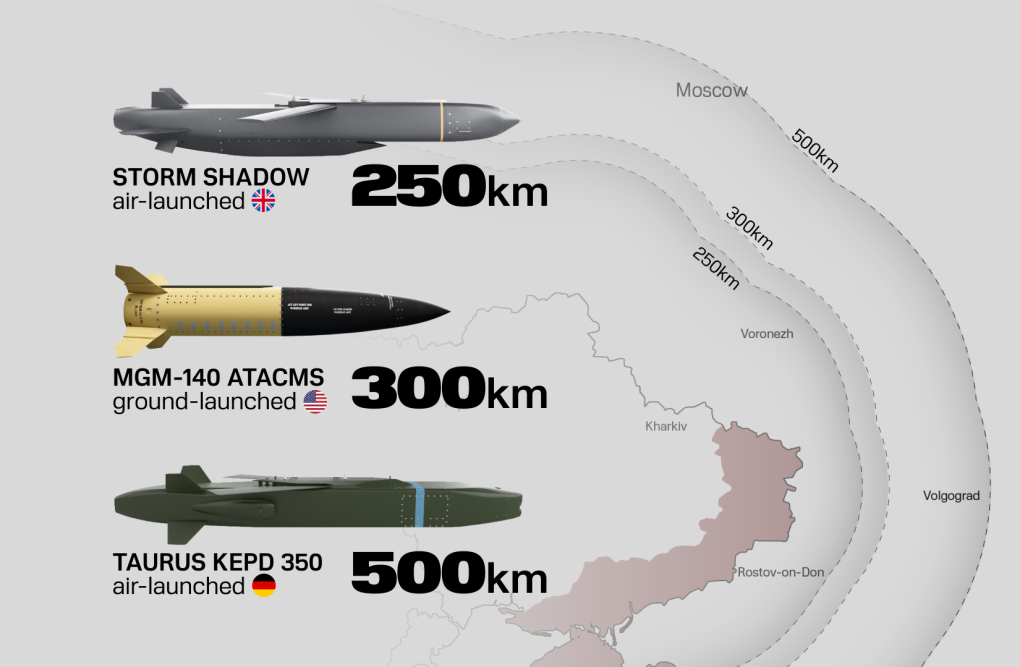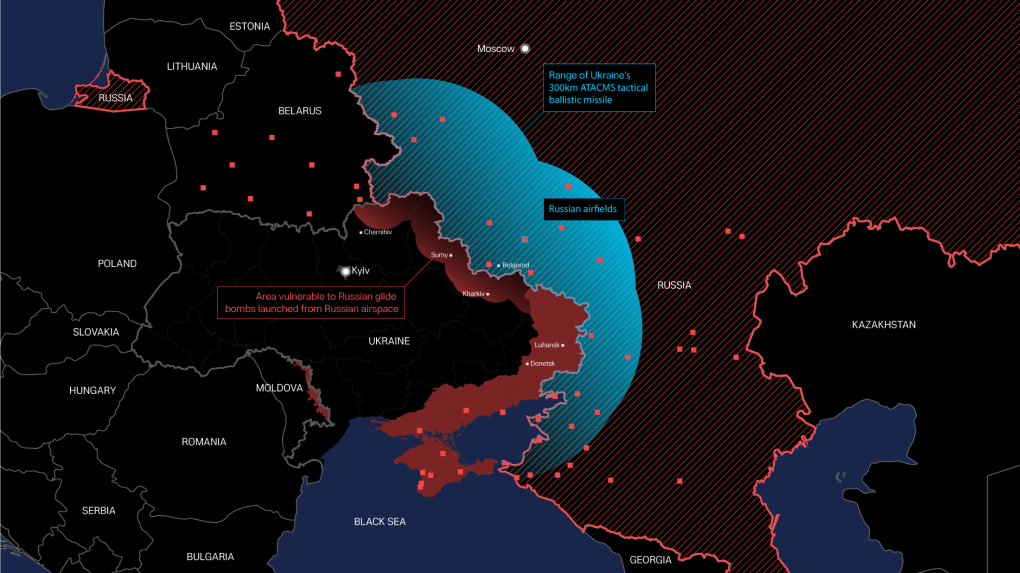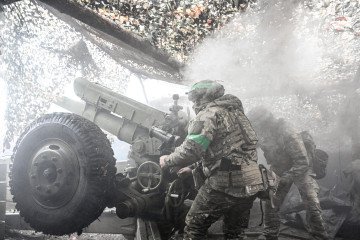- Category
- War in Ukraine
Kill the Archer, Not the Arrow: Ukrainians Urgently Seek US Approval to Strike Back at Russia

In August alone, Russia fired over 200 missiles at Ukraine, not including guided bombs. Allowing Ukraine to target Russian airfields can drastically cut these attacks.
Russia’s massive August 26, 2024, attack on Ukraine ranks among the largest assaults by one nation on another in modern history: 127 missiles and 109 Shahed drones. Ukraine shot down 99 missiles and 99 drones without help from neighboring air forces. Despite enhanced defenses, several dozen missiles still got through, striking 15 regions and damaging or destroying multiple energy infrastructure sites.
Ukraine’s missile interception success rate often exceeds 80-90% per attack, but there’s a way to reduce the attacks altogether. The Ukrainian Defense Ministry has repeatedly emphasized to the U.S. government: it’s not enough to shoot down the arrow—you need to eliminate the archer.
Russian military airfields
Russia has around twenty military airfields on its territory within the range of long-range missiles, housing fighters, bombers, helicopters, and combat kits. These airfields operate with near-total impunity.
Ukraine is barred from using Western-supplied long-range missiles like ATACMS and Storm Shadow/SCALP to strike these airfields, despite their ability to inflict significant damage.
Ukraine has several types of long-range drones that can reach these airfields, but long-range missiles offer distinct advantages: they’re faster, often resistant to electronic warfare, and harder for air defenses to intercept. Their larger warheads deliver more substantial damage. Recently, Russia has begun building hangars to shield their aircraft, making the missile warhead’s power crucial for penetrating this added defense.

Eliminating aircraft is central to Ukraine’s defense strategy. In early September, Russia unleashed daily attacks on Kharkiv, using guided bombs among other weapons. These bombs are loaded onto planes at airfields near the border and then used to bomb the city. The attacks destroyed Kharkiv’s Palace of Sports, several buildings, and homes, killing dozens of civilians. While shooting down these bombs with current air defense systems is nearly impossible, taking out the planes that carry them is entirely feasible.
"Let Ukraine Strike Back" is a Ukrainian initiative, backed by Defense Minister Rustem Umerov and Foreign Minister Dmytro Kuleba, seeking U.S. approval to use long-range missiles against Russian military targets. The goal: to protect Ukrainian cities and strengthen the country’s defenses.
Ukraine has already given the U.S. a list of targets and outlined a plan to ensure missiles are aimed solely at military sites and infrastructure. U.S. approval is crucial and would encourage other allies, like the UK and France, to authorize the use of Storm Shadow/SCALP missiles against Russian territory.
Enhancing strike options
Targeting logistical sites and airfields would disrupt the Russian army’s offensive momentum, which relies heavily on air superiority both at the front lines and in strikes on Ukrainian cities and energy infrastructure. For example, Kharkiv has already lost its energy generation capacity due to these attacks.
Germany could join the U.S., France, and the UK in supplying long-range missiles. With the 500+ km Taurus missile—the longest of its kind—Germany is the only nation yet to arm Ukraine with long-range weapons. These missiles could greatly enhance Ukraine's defense and expand its ability to target Russian military sites both within and beyond occupied territories.

Ukraine is also seeking long-range JASSM missiles for its F-16s from the U.S. Some versions can hit targets over 900 km away, while even the basic models have a range of nearly 300 km. With the first F-16s already in Ukraine, the air force is ready—now they just need the missiles.
Ukraine has developed a long-range rocket drone, "Palianytsia," and successfully used it to strike targets in occupied Crimea. However, scaling up production and securing the resources needed for sustained strikes on Russian military targets will take time. Meanwhile, Western partners already have the tools to help Ukraine significantly reduce the intensity of Russian air attacks by permitting Ukraine to strike back.
-29a1a43aba23f9bb779a1ac8b98d2121.jpeg)
-531fe8d92c87f1630d3f1a2503c33089.png)


-886b3bf9b784dd9e80ce2881d3289ad8.png)


-f88628fa403b11af0b72ec7b062ce954.jpeg)